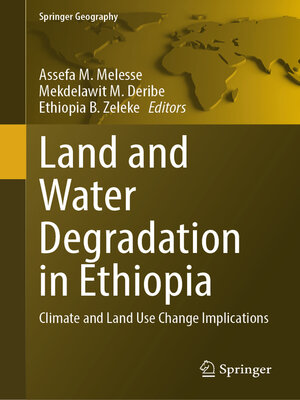Land and Water Degradation in Ethiopia
ebook ∣ Climate and Land Use Change Implications · Springer Geography
By Assefa M. Melesse

Sign up to save your library
With an OverDrive account, you can save your favorite libraries for at-a-glance information about availability. Find out more about OverDrive accounts.
Find this title in Libby, the library reading app by OverDrive.



Search for a digital library with this title
Title found at these libraries:
| Library Name | Distance |
|---|---|
| Loading... |
Water is life for all human beings and is essential for sustainable economic development. Access to freshwater is a fundamental human right. Ensuring access to safe drinking water and sanitation is vital for economic growth, poverty reduction and enhancement of human well-being. Yet, uncertain global water availability compounded by factors such as climate change and land degradation have made meeting the growing water demand a daunting task for many communities.
The world is facing an unprecedented climate crisis, intricately linked with water resources. We have witnessed frequent and intense hydrologic extremes (floods and droughts). In the past decade alone, floods, storms, droughts, and other weather-related events accounted for over 90% of natural disasters.
Water, being at the center of national policies of many countries, the impact of climate change on water resources extends across multiple sectors including energy production, food security, health, environmental conservation, and economic development. Research has shown that climate change has impacted the hydrologic cycle, affected the availability and predictability of water, and hence threatened the efforts of poverty reduction and economic development. These impacts are more pronounced in developing countries, exacerbating existing socioeconomic challenges, and hindering progress towards self-sufficiency in food, water, and energy production. The impact of climate change on these countries is further aggravated by land degradation, land use changes, unsustainable agricultural practices, poor watershed management and ecological degradation and loss of biodiversity.
This book aims to explore these issues, with chapters dedicated to examining land and water degradation, water quality, irrigation, groundwater management, land use dynamics and the impacts of climate change on freshwater resources in Ethiopia.







